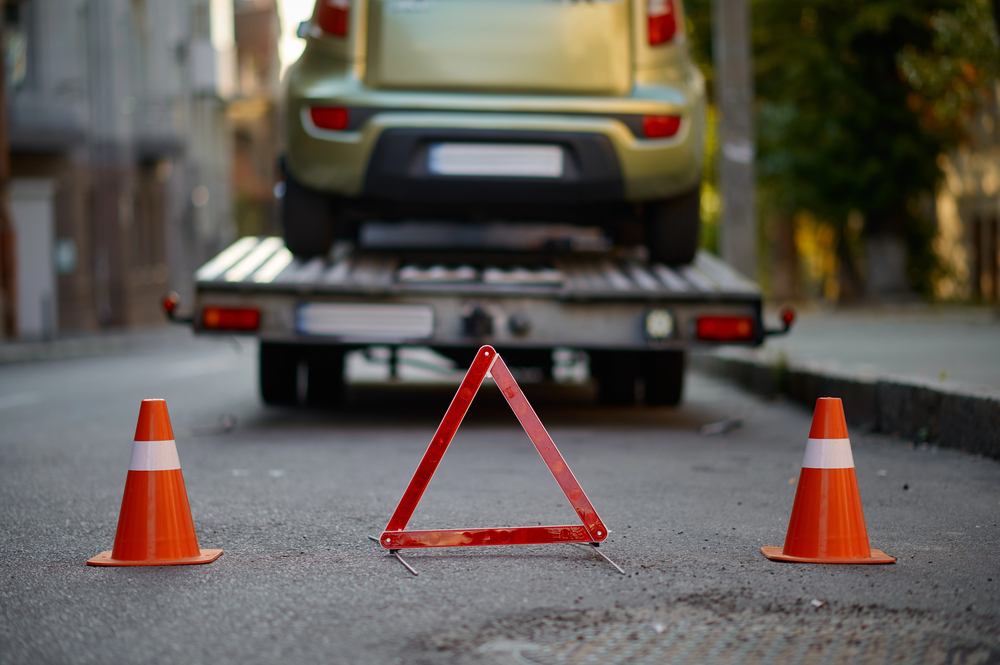Driving safely isn’t just about following the rules, it’s about knowing how to react in different situations. Whether you’re dealing with bad weather, tricky road conditions, or vehicle maintenance concerns, having the right knowledge can make a huge difference. To help you stay prepared, we’ve answered 13 of the most common driving safety questions. Let’s dive in.
What’s the Safest Following Distance?

The general rule is to stay at least three seconds behind the vehicle in front of you. In bad weather, increase this to five or more seconds for extra safety. This gives you enough time to react if the car ahead suddenly stops. Always adjust for speed, road conditions, and traffic flow.
How Often Should I Check My Tire Pressure?

Check your tire pressure at least once a month, preferably when the tires are cold. Underinflated or overinflated tires can reduce traction, lower fuel efficiency, and even cause blowouts. Your car’s manual or the sticker inside the driver’s door will show the recommended pressure. Properly inflated tires improve handling and safety on the road.
When Should I Replace My Brake Pads?

Most brake pads last between 25,000 and 70,000 miles, depending on driving habits and conditions. If you hear squeaking, grinding, or feel vibrations when braking, get them checked immediately. Delaying replacement can damage your rotors, leading to more expensive repairs. Regular inspections help catch issues before they become serious.
What Should I Do if My Brakes Fail?

Stay calm, downshift to a lower gear, and pump the brake pedal to build pressure. If that doesn’t work, use the emergency brake carefully to slow down. Steer to a safe area and warn others by flashing your hazard lights. Once stopped, call for roadside assistance immediately.
Related Post: Mechanic-Approved! 12 Expert Answers to Your Car Problems
How Do I Handle Hydroplaning?

If your car starts hydroplaning, don’t panic or slam the brakes. Ease off the accelerator, steer gently in the direction you want to go, and wait for your tires to regain traction. Avoid sudden movements, as they can cause you to lose control. Driving at moderate speeds and keeping tires properly inflated can help prevent hydroplaning.
Related Post: The Ultimate Car Owner’s Guide: 15 Common Auto Questions Solved
What’s The Safest Way to Drive in Fog?

Use low-beam headlights or fog lights, never high beams as they reflect off the fog and reduce visibility. Slow down, increase following distance, and use roadside reflectors as a guide. If visibility is extremely low, pull over to a safe area and wait. Keep your windows clear to prevent fogging inside the car.
Related Post: 12 Cheap Electric Cars That Won’t Leave You Stranded
How Can I Prevent Drowsy Driving?

Get enough rest before driving, take breaks every two hours, and stay hydrated. If you feel drowsy, pull over for a quick nap or switch drivers if possible. Rolling down the window or blasting music won’t help for long. Caffeine can provide a short-term boost, but sleep is the only real fix.
Related Post: Affordable EVs That Actually Go the Distance – 13 Best Picks
When Should I Use Hazard Lights?

Use hazard lights when your car is stopped due to an emergency, like a breakdown or sudden traffic stop. Don’t use them while driving in heavy rain or fog, as this can confuse other drivers. If you need to warn drivers behind you of an unexpected road hazard, flashing your brake lights is a better option. Always follow local laws regarding hazard light use.
Related Post: 13 Car Horns So Loud, They’ll Wake the Entire Neighborhood!
How Do I Avoid Blind Spot Accidents?

Always check your blind spots by turning your head before changing lanes, mirrors alone aren’t enough. Adjust your side mirrors so you see just the edge of your car, reducing blind spots. Some newer cars have blind-spot monitoring systems for extra safety. Avoid lingering in other drivers’ blind spots to prevent sudden collisions.
Related Post: 14 Cars That Make More Sense to Buy Pre-Owned
What Should I Do if My Car Skids?

Take your foot off the gas and steer gently in the direction you want to go. Don’t slam the brakes, as this can worsen the skid. If you have anti-lock brakes (ABS), apply steady pressure otherwise, pump the brakes lightly. Practicing skid control in a safe environment can help improve your reaction in real situations.
Related Post: SUVs for Seniors: Comfort and Safety Features That Matter Most As You Age
How Can I Tell if My Headlights are Too Dim?

If your headlights seem weak or yellowish, they may need cleaning, realignment, or replacement. Over time, bulbs lose brightness, and headlight lenses become cloudy. Check them in a dark area and compare them to other cars’ lights. Upgrading to LED or high-performance halogen bulbs can improve nighttime visibility.
Related Post: These 12 Cars Are Appreciating Like Fine Wine – And Why You Should Consider Buying Now
What’s The Best Way to Merge onto a Highway?

Match the speed of traffic while using your turn signal, and look for a safe gap to merge. Don’t stop at the end of the ramp unless absolutely necessary. Be predictable, other drivers should know what you’re doing. If another driver won’t let you in, adjust your speed rather than forcing a merge.
Related Post: 13 SUVs Known for Holding Their Value and Staying on the Road for Over 200,000 Mile
When is it Safe to Use Cruise Control?

Cruise control works best on dry, open highways with minimal traffic. Avoid using it in heavy rain, snow, or on winding roads where quick adjustments are needed. If you feel drowsy, disable cruise control to stay actively engaged in driving. Always be ready to regain manual control if road conditions change suddenly.
Related Post: The Secret History of Car Brand Logos: Hidden Meanings and Design Evolution
Knowing how to handle different driving situations can keep you safer on the road. Regular vehicle maintenance and defensive driving habits are key to preventing accidents. Stay alert, be prepared, and never take safety for granted. A little knowledge can make a big difference in keeping you and others safe behind the wheel.
Disclaimer: This list is solely the author’s opinion based on research and publicly available information.
Mechanic-Approved! 12 Expert Answers to Your Car Problems

Keeping your car in top shape means understanding common issues and how to fix them. Whether it’s strange noises, warning lights, or performance problems, knowing what’s wrong can save you time and money. Here are 12 expert-approved answers to some of the most frequent car questions.
Read it here: Mechanic-Approved! 12 Expert Answers to Your Car Problems
The Ultimate Car Owner’s Guide: 15 Common Auto Questions Solved

Owning a car comes with plenty of questions, from maintenance to troubleshooting unexpected issues. Whether you’re a new driver or a seasoned vehicle owner, knowing how to handle common problems can save you time, money, and stress. This guide answers 15 frequently asked car questions in simple terms, so you can keep your ride running smoothly and avoid costly repairs.
Read it here: The Ultimate Car Owner’s Guide: 15 Common Auto Questions Solved
SUVs for Seniors: Comfort and Safety Features That Matter Most As You Age

As drivers age, comfort, ease of use, and safety become even more essential. SUVs offer the perfect mix of accessibility, visibility, and practicality for a smooth, secure ride. With supportive seating, intuitive controls, and advanced driver-assistance systems, modern SUVs make every journey easier. Here are the key comfort and safety features seniors should look for when choosing an SUV.
Read it here: SUVs for Seniors: Comfort and Safety Features That Matter Most As You Age


